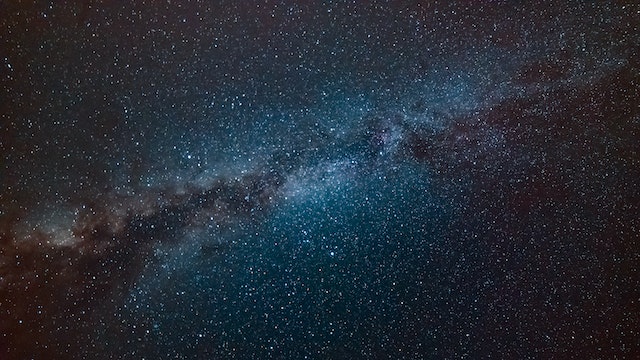
What is the Great Attractor? It is the theorized gravitational center of our Milky Way Galaxy and 100,000 other galaxies.
The universe is expanding at a rate of 2.2 million km per hour. All galaxies should therefore be moving at that speed, but it turns out we are not. Our Milky Way Galaxy is moving through space at a speed of 630 km per second. Astronomers worked this out by looking at the cosmic microwave background radiation. CMB is the radiation left over from the big bang and it is everywhere in the universe. When you want to judge the speed of something, you need a point of reference. On Earth, you can look at the background. In space, one point of reference is the CMB. The CMB has a constant temperature and this is the point of reference the speed is measured against. Astronomers found that one side of the Milky Way Galaxy was ever so slightly hotter than the other side. It was less than one one hundredth of a degree centigrade, but that tells astronomers that we are moving at 630 km per second.
We are currently heading towards the Andromeda galaxy. It is 2.5 million light-years away, so we won’t collide with it for about 4.5 billion years, but we will get there in the end. It won’t be much of a collision because there is so much empty space in each galaxy that it will be very unlikely that anything will hit anything else, but we will collide. And this is where the theory of the Great Attractor comes from. If the universe is expanding at 2.2 million km per second, why are we heading towards the Andromeda galaxy at 630 km per second? The reason must be the Great Attractor.
Our Milky Way Galaxy is being attracted towards a point that appears to be between 150 and 250 million light years away. The strange thing is that our galaxy is not the only one being pulled towards the Great Attractor. It is the central gravitational point for the Laniakea Supercluster, which contains the Milky Way Galaxy and about 100,000 other galaxies spread out over 520 million light years. Some of the galaxies in the Supercluster are gravitationally bound to each other and they orbit each other, but they are all being drawn towards the Great Attractor.
Nobody knows what the Great Attractor is and why it has so much pull. The main reason we don’t know what’s there is because we can’t see it. The only viewpoint we have from Earth is looking up and through the Milky Way Galaxy, which obviously obscures the view. This area that we can’t see is called the Zone of Avoidance, and the Great Attractor just happens to be there. The only way to look through the Zone of Avoidance is to use X-rays and infrared light, which can pass through it. That doesn’t give a very clear picture. Unless we can get something far enough away from our Solar System to get a better view (which is not very likely), we will never be able to see it.
So, what is the Great Attractor and why does it have such pull? One theory was that it is the Norma Cluster of galaxies. The Norma Cluster appears to be at or very close to the Great Attractor, but a cluster of galaxies wouldn’t have enough mass to attract 100,000 other galaxies to them. It is more likely that the Norma Cluster has been pulled in by whatever the Great Attractor is.
Another theory is that it is a massive amount of dark energy. The expansion of the universe is theorized to be caused by dark force. This is an unproven force that would be undetectable but would be strong enough to counter the effects of dark energy. This dark force could be pulling all of the galaxies in. Another theory was that it is an area of over-density. Nobody knows how, but perhaps the area is far more dense than other areas of space and thus has a far higher gravity. A third theory is that it is the way the universe will end. It will expand out to a certain point and then be pulled back into a central point for the big crunch. The Great Attractor could be the location of that crunch.
However, recent discoveries have shown that the Great Attractor is itself, along with the whole Laniakea Supercluster, being attracted towards an even bigger supercluster with an even bigger Attractor. This would be the Shapley Supercluster, which is 650 million light-years away and is the largest concentration of galaxies in the sky that we can see. That supercluster is being pulled into its own Great Attractor. Will we ever work out what they are? And this is what I learned today.
Photo by Hristo Fidanov: https://www.pexels.com/photo/milky-way-galaxy-during-nighttime-1252890/
Sources
https://www.space.com/33579-will-the-great-attractor-destroy-us.html
https://en.wikipedia.org/wiki/Great_Attractor
https://en.wikipedia.org/wiki/Shapley_Supercluster
https://en.wikipedia.org/wiki/Laniakea_Supercluster
https://medium.com/predict/the-powerful-and-mysterious-great-attractor-710f353e809f
https://en.wikipedia.org/wiki/Norma_Cluster
https://en.wikipedia.org/wiki/Zone_of_Avoidance
